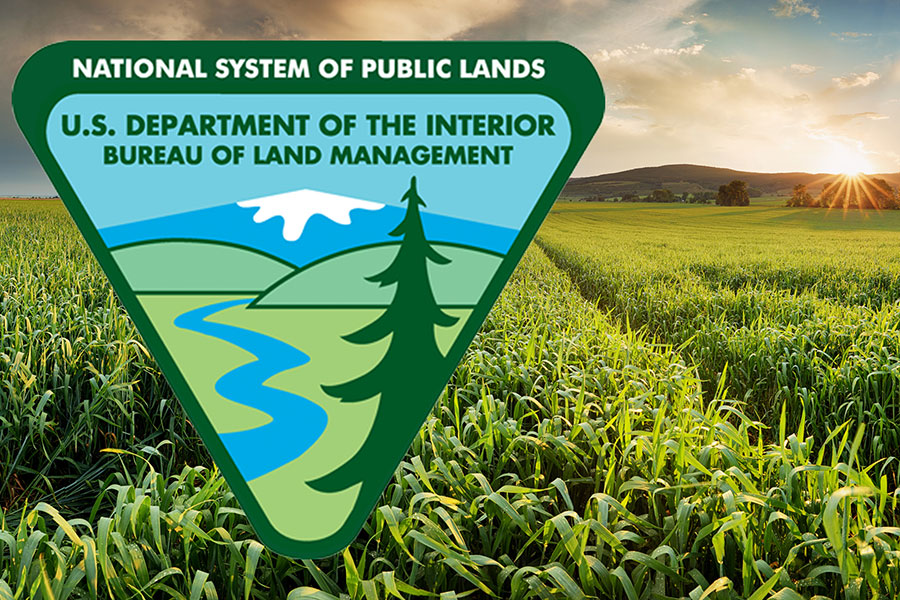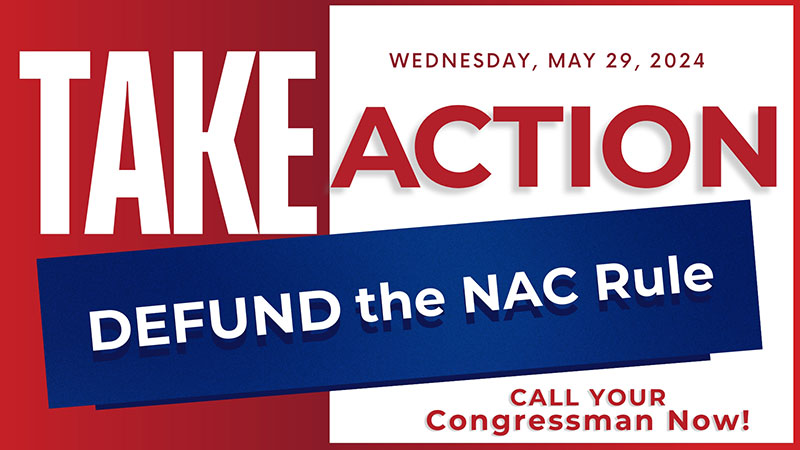Past Issues
Key Issues
Why Property Rights Matter
Documents
News Releases
- Administrative State’s April Power Grab
– April 25, 2024
- Utah Passes Anti-NAC Legislation
– March 28, 2024
- Local Governments Sue to Stop BLM’s New Resource Planning Rules
– December 12, 2016
- Coalition Challenges BLM’s Proposed Planning Rules
– May 25, 2016
- Coordination Requested on BLM’s Proposed Planning Rules
– April 13, 2016
- BLM Proposes New Rules that Erode Coordination
– April 4, 2016
BLM 2016 Proposed Planning Rule
In the final year of the Obama Administration, the Bureau of Land Management (BLM) released proposed new rules that would govern how the agency develops and implements management plans on over 240 million acres of land. Titled “Planning 2.0,” the agency described their effort as one to modernize the planning process; however, the proposed rules significantly reduce the role of local governments in the management of the federal lands.
American Stewards of Liberty organized a Coalition of Governments to develop comments on the rules, and later, helped six counties and a soil and water conservation district file a case challenging the rules (Kane County, UT v. DOI). Fortunately, Congress passed H.J. Res 44, a joint resolution of disapproval under the Congressional Review Act signed into law by President Trump. The bill repeals the planning rules.
Included in the comments and complaint filed by the coalition is an in-depth analysis of the Federal Land Policy and Management Act coordination requirement (43 U.S.C. Sec. 1712(c)(9)) that should be studied by those interested in gaining a deeper understanding of Congress’s direction to the federal agency.
The petitioners in the suit were Kane County, Utah, Big Horn County, Wyoming, Chaves County, New Mexico, Custer County, Idaho, Garfield County, Colorado, Modoc County, California and the Dona Ana Soil and Water Conservation District in New Mexico. The case and comments were prepared by Norman James with Fennemore Craig, in Phoenix, Arizona.
Documents
News Releases
- Administrative State’s April Power Grab
– April 25, 2024
- Utah Passes Anti-NAC Legislation
– March 28, 2024
- Local Governments Sue to Stop BLM’s New Resource Planning Rules
– December 12, 2016
- Coalition Challenges BLM’s Proposed Planning Rules
– May 25, 2016
- Coordination Requested on BLM’s Proposed Planning Rules
– April 13, 2016
- BLM Proposes New Rules that Erode Coordination
– April 4, 2016
Congressional Letter Implementing Coordination
Lead by Paul Gosar (AZ), Chairman of the Congressional Western Caucus, Ken Buck (CO) and Doug LaMalfa (CA), the Congressional leaders recognized that the coordination directives in existing laws have not been carried out by any previous administration. Although local governments have been requesting coordination, the federal agencies have generally resisted this requirement.
In a statement issued Thursday by the Congressional Western Caucus, Chairman Gosar noted that “States and local governments possess important and critical knowledge that should be included in any planning process. Their voices deserve to be heard on important decisions that impact their livelihoods. If the Trump Administration fully implements coordination, valuable local perspectives won’t be ignored any longer, as they were, systematically, during the Obama Administration.”
The Congressional Members who signed the letter are:
Mark Amodei (NV), Brian Babin (TX), Kevin Brady (TX), Ken Buck (CO), Kevin Cramer ND), Trent Franks (AZ), Greg Gianforte (MT), Louie Gohmert (TX), Paul Gosar (AZ), Jaime Herrera Beutler (WA), Steve King (IA), Raul Labrador (ID), Doug LaMalfa (CA), Doug Lamborn (CO), Tom McClintock (CA), Alex Mooney (WV), Dan Newhouse (WA), Ralph Norman (SC), Steve Pearce (NM), Mike Simpson (ID), Glenn Thompson (PA), and Scott Tipton (CO).
The draft Executive Order, “Restoring the Rule of Law and Federalism by Ensuring Coordination with State and Local Governments,” sets forth the principles and policies for coordination as directed under the Federal Land Policy and Management Act, National Forest Management Act and the National Environmental Policy Act. The Executive Order also would direct federal agencies to consider State and local planning and polices when making decisions to ensure consistency.
Three draft policies implementing coordination were also advanced. These are for Inventory, Planning and Management Activities.
Many County officials have praised the Congressional leaders’ action.
“We have been calling on the federal agencies to coordinate with us for many years, but are routinely met with strong resistance,” commented Garfield County Colorado Commissioner, Tom Jankovsky. “In bringing this issue to the attention of the President, the Congressional leaders are giving us the help we need to build strong working relationships across all levels of government.”
“Coordination is essential to proper management of our land and resources, ensuring federal, state and local plans are harmonized and actions carried out in such a way that protects the people, the economy, and the land,” stated Kane County Utah Commissioner, Jim Matson. “We are grateful to the leaders in Congress for their decisive action in moving this issue to the desk of the President.”
“We must have federal agencies responsive and accountable at the local level,” commented Robert Corn, Chairman of the Chaves County New Mexico Board of Commissioners. “Coordination brings the decision-making back to where the people are directly impacted. We applaud our Congressional leaders for advancing this issue to the White House and look forward to real change on the ground.”
Documents
News Releases
- Administrative State’s April Power Grab
– August 4, 2017
Documents
News Releases
- Coordinating National Monument Plans
– February 29, 2016
- Separating the Men from the Boys…
– January 27, 2016
- Study Shows Ranching as Top Economic Producer
– July 26, 2015
Grand Staircase Escalante National Monument
Kane County, Utah is coordinating with the Bureau of Land Management (BLM) on the Livestock Grazing Amendment for the Grand Staircase Escalante National Monument. They initiated coordination with the agency after participating as a cooperating agency, and finding their positions ignored.
The BLM was considering several alternatives including one that eliminated grazing entirely and one that allowed up to 32,000 animal unit months (aum’s). After initiating coordination, the County was able to insist the BLM review and comply with the Presidential Proclamation language that created the monument in 1998, which specifically required that livestock grazing continue in the monument at the existing level when the monument was designated. That level was 106,000 aum’s. The specific Proclamation language protecting grazing is as follows:
“Nothing in this proclamation shall be deemed to affect existing permits or leases for, or levels of, livestock grazing on Federal lands within the monument; existing grazing uses shall continue to be governed by applicable laws and regulations other than this proclamation.”
Currently the County is insisting that the BLM rewrite the needs and purpose statement for the Environmental Impact Statement incorporating the Presidential Proclamation language protecting livestock grazing. They are also insisting that the BLM develop an alternative that manages the land in such a way as to ensure the return of the 106,000 aum’s.
The Grand Staircase Escalante National Monument was designated by President Clinton in 1998 under the Antiquities Act and encompasses nearly 1.9 million acres in Southern Utah.
Documents
News Releases
- Coordinating National Monument Plans
– February 29, 2016
- Separating the Men from the Boys…
– January 27, 2016
- Study Shows Ranching as Top Economic Producer
– July 26, 2015
North Cascades Grizzly Bear Recovery Plan
In 1993, the US Fish and Wildlife Service issued a Grizzly Bear Recovery Plan that identified six locations that may provide suitable habitat for the grizzly bear, currently listed as threatened under the Endangered Species Act. One of these sites, the North Cascades system is located in North-Western Washington State. During the final years of the Obama Administration, the U.S. Fish and Wildlife Service and National Park Service (Agencies) began preparing an Environmental Impact Statement (EIS) pursuant to the National Environmental Policy Act (NEPA) to reestablish grizzly bears in the area. They are nearing the completion of the study with plans to release the Final EIS fall of 2017.
April 24, 2017, the Counties of Chelan, Skagit and Okanogan hosted the first joint coordination meeting with the U.S. Fish and Wildlife Service and the National Park Service on the potential introduction of grizzly bears into the North Cascades system. The Agencies failed to seek meaningful coordination prior to the preparation of the DEIS. Had they done so, they would have learned earlier how the potential introductions of grizzly bears conflicts with the Counties Comprehensive Plans. They would have also been informed early in the process that there were important peer reviewed studies that should have been considered to properly analyze the impacts on the communities. These were presented to them during the coordination meeting as well as other critical findings regarding the sufficiency of the environmental analysis. Some of these findings are:
- The last confirmed siting of a grizzly bear in the North Cascades was 21 years ago, and the antidotal data referred to as proof there once was a viable grizzly bear population, is unreliable. The new normal for this area is that it supports a robust hunting, fishing and backpacking population (estimated 8 million visitor days per year), as well as essential agricultural industries. The North Cascades hosts a vibrant community of people who live, work and play in this area, activities that are not compatible with grizzly bears and in fact will attract the bears into the populated areas.
- The Grizzly Bear Recovery Plan identifying the North Cascades as potential habitat for the bear was last revised in 1993. A supplemental plan for the North Cascades was added in 1997, but contained no new science. Although the plan was based on the best available science at that time, the understanding of bear behavior is far more advanced today. There are now several peer reviewed studies that track bear movements in other recovery zones using modern GPS technology. These more recent studies provide superior insight into the habitats bears seek for forage and shelter, as well as their interactions with humans. A revised Recovery Plan should have been prepared prior to the development of the EIS for the North Cascades, incorporating the latest science.
- The Draft Environmental Impact Statement (DEIS) also fails to incorporate this new data into its analysis. It fails to properly note and consider the multiple and significant human fatalities in other bear habitat areas.
- The agencies failed to consider the local plans, policies and programs when preparing its analysis. As a result, they have omitted significant direct and indirect impacts to the communities, and have not properly analyzed how transplanting bears into the North Cascades would harm the Counties ability to protect the health, safety and welfare of the citizens.
- The plan to introduce the grizzly bear into the North Cascades is based on the Agency goal to recover the bear in an area they believe it once lived. However, the Endangered Species Act does not require recovery in all the historical habitat, rather the question that should be asked is whether a population in the North Cascades is essential to the continued existence of the bear.
On August 7, 2017, Chelan, Skagit and Okanogan Counties sent a letter to Department of the Interior Secretary Zinke requesting that he remove the North Cascades from the Grizzly Bear Recovery Plan.
Documents
News Releases
Streamlining BLM
March 27, 2017, Secretary of the Interior, Ryan Zinke, issued a Memorandum to the Acting Director of the Bureau of Land Management (BLM) directing him to streamline the land use planning and National Environmental Policy Act (NEPA) processes. “I hereby direct BLM, in accordance with its multiple-use mission, to immediately begin a focused effort to identify and implement results-oriented improvements to its land use planning and NEPA processes.”
The current BLM land use planning and implementation procedures take an excessive amount of time and money to carry out. The decision-making process is not responsive to the needs on the ground, and local field offices are stymied as they wait for direction from Washington D.C. on common management issues. The request for better ideas is a welcomed reprieve. However, the message Secretary Zinke needs to hear is that he does not need to re-invent the wheel. Rather, he simply needs to enforce a provision of the Federal Land Policy and Management Act (FLPMA) enacted in 1976 that has yet to be carried out; Coordination with States and local governments.
Section 202(c)(9) of FLPMA require coordination with States and local governments. The purpose of this provision is to ensure effective inventory actions, planning and management activities in coordination with State and local authorities. Carrying out this provision of the law would accomplish the Secretaries priorities for improving the planning process, which are: (1) reducing planning time, (2) reducing costs, (3) and more responsive to local needs.
Several Counties are making that request.
A handful of Counties in the West were invited to participate in a series of weekly conference calls with the BLM to offer ideas on how the planning and NEPA processes could be improved. In addition to the call to Counties, members of the public have also been asked to submit ideas by July 24, 2017. The BLM will be compiling the collected ideas and making a recommendation to the Acting Director that will be submitted to the Secretary in September.
Garfield County, Colorado, as well as several other Western Counties, are submitting a letter asking the Secretary to be the first to implement the coordination provision as intended by Congress. Attached to the letter is a legal analysis of the FLPMA coordination provision titled, “Coordination and Plan Consistency Review Under the FLPMA Section 202(c)(9),” prepared by Norman James, Director Fennemore Craig, P.C.
Other Counties, Special District, States and producers who agree with this position are encouraged to make a similar request, and can do so by attaching the Counties letter or referring to it with your comments. Here are the documents you can use to make your recommendation:
Garfield County letter to Cynthia Moses-Nedd
Coordination and Plan Consistency Review Under the FLPMA Section 202(c)(9), by Norman James
Coordination, Cooperation and Public Input Process Chart
To access the Streamlining BLM website, click the following link:
Documents
News Releases
- Streamlining BLM? – Implement Coordination
– July 18, 2017
Documents
News Releases
- Border Security: 391 Coordination Commission Formed to Protect the Southern Border
– August 21, 2021
- Federal Rail Authority No Show – TXDOT No Comment
– June 19, 2017
- Texas Court Rules for Local Government Coordination
– June 15, 2017
- Texas State Agency Sued for Failure to Coordinate
– November 1, 2016
- Federal Rail Authority Controls Texas Department of Transportation
– August 24, 2016
Texas High Speed Rail: Dallas-to-Houston
The Waller County Sub-Regional Planning Commission (WCSRPC) was formed for the purpose of planning the future development of their community, including the planning of transportation systems within their jurisdiction. The federal NEPA and Texas Code 391.009(c) require that the High Speed Rail project and environmental study be coordinated with the WCSRPC. The Texas Department of Transportation (TXDOT) initially attended one coordination meeting in February of 2015. They refused to attend a second meeting after the FRA instructed them to “refrain from participating,” in future meetings until the Draft EIS was released.
The WCSRPC filed suit against TXDOT for failing to coordinate as directed by state law. January 5, 2017, the District Court in Travis County, Texas ordered the agency to coordinate with the planning commission “to the greatest extent feasible.” Following this decision TXDOT participated in a second coordination meeting May of 2017.
The FRA has published three reports that began with an assessment of four build corridors, and has been narrowed down into a single alignment through the WCSRPC jurisdiction, all before initiating their NEPA analysis. The WCSRPC has maintained that the FRA and TXDOT are preparing an environmental study to justify the predetermined route, a violation of the National Environmental Policy Act.
Documents
News Releases
- Border Security: 391 Coordination Commission Formed to Protect the Southern Border
– August 21, 2021
- Federal Rail Authority No Show – TXDOT No Comment
– June 19, 2017
- Texas Court Rules for Local Government Coordination
– June 15, 2017
- Texas State Agency Sued for Failure to Coordinate
– November 1, 2016
- Federal Rail Authority Controls Texas Department of Transportation
– August 24, 2016
From our Mason members…
“…this story turned out about as good as it could and you folks (ASL) played a major role in making it happen. Upon reflection, Mason County was in effect, blind-sided. We did not see this coming. But, with your help and advice, along with committed local leadership and sound science, we were able to build a foundation upon which to mount a defense. Your understanding of the law and the various agencies clarified our rights as citizens. Your experience suggested tactics and strategies that fit our abilities. Your warm and caring attitude also helps more than you probably realize. You stood by us as one of our most valuable resources.”
Gerry Bohmfalk
Landowner and world-renowned entomologist
“With the tool of a 391 Commission and the support of experts with a broad range of talents, we were able to sit down with several agencies and be certain that our concerns were heard and documented in the public record. After months of coordination effort and broad local support we accomplished our goal of protecting our historic and scenic heritage and preserving our community values, and the PUC took the Mason route “off the table” even before the discussion about the final decisions. The American Stewards and Dan and Margaret were instrumental in helping our officials get organized and proceed in the right directions at the start so that all of the agencies involved in this decision were aware of our concerns and resistance to a bureaucratic decision destroying the natural beauty of our corner of the Hill Country that had been nurtured and preserved for generations.”
Brent Hinckley,
Mayor, City of Mason
“When ‘Big Government’ threatened private property in the City and the County of Mason Texas, the American Stewards of Liberty assisted County and City governments with organization of a 391 Coordination Commission composed of local politicians and citizens.
ASL helped develop a strategy, engage local experts, create a state wide communication strategy and began government-to-government coordination meetings. The speed and depth of the response demonstrated to outside organizations that Mason plays by the rules and is prepared to respond to those that are larger and stronger politically and financially. In my opinion, the 391 Coordination process was an important component in identifying and implementing the best public policy solution for all parties involved.”
Dean Kothmann
Landowner born and raised in Mason and retired professional engineer
Mason County Powerline
When the Lower Colorado River Authority (LCRA), a legislatively-created state agency, began making plans to place a Competitive Renewable Energy Zone (CREZ) transmission line through Mason County, Texas, the community organized, formed a 391 Sub Regional Planning Commission and invoked coordination with the LCRA and Texas Public Utilities Commission (PUC). Eighteen months later, they were no longer the preferred route for the line — they were removed from consideration.
Here is their story …
Mason County is a premier destination spot in the Texas Hill Country. It still retains the “Norman Rockwell” quality of small town America where not one stop light, Walmart or fast food chain exists. Because of this, Mason is frequented by tourists in the spring who drive across the state to view wildflowers and take tours. In the fall, hunters descend on the county to hunt prized deer, turkey and other native and exotic wildlife species.
Mason County is 99% privately owned with many of the current landowners direct descendents of original settlers. Mason County has retained its charm and pristine landscape through the wise stewardship of its landowners and its fierce resistance to industrialize the land. Here cattle, wildlife and wildflowers flourish under the watchful hand of private landowners.
The Lower Colorado River Authority (LCRA) had plans to change all this. They had been directed by the Texas Legislature to construct an 18 story-high electric transmission line (known as a CREZ line) by 2013 that would connect the wind farms in West Texas to the population centers of Austin and San Antonio. The shortest path is through the Texas Hill Country. On October of 2009, Mason County was added as an afterthought to their route selection process.
The transmission lines would have condemned a right-of-way up to 260 feet wide, clear-cutting everything in its path. The line would have passed through the landscape offering no opportunity to those communities and landowners impacted to tie into the lines and use the electricity. The landowners, cities and towns would harbor all the impact, and yet receive none of the benefit.
The City of Mason and the County Commission formed a 391 Commission, which could invoke coordination with the state agency, and immediately sent notice to LCRA and the Public Utilities Commission (PUC).
The residents of Mason also wasted no time and created the Texas Hill Country Heritage Association (THCHA) to organize the public opposition to the CREZ line and public support of the 391 Commission. The Association supported the coordination effort and kept the public informed and involved in the process.
After holding coordination meetings with four federal and state agencies involved in the environmental and route selection process for Mason, the following was achieved:
- Require that if the line was to be routed through Mason County, a rigorous Environmental Impact Statement (EIS) would need to be completed as opposed to the planned Environmental Assessment (EA); (During their first meeting with LCRA, the agency representative informed the Commission that a NEPA study would not be necessary since there was no “major federal action” involved in the project. The Commission disagreed and pointed out a number of “significant” impacts as defined by the CEQ regulations, which require that a full EIS be completed. In this first meeting, Mason SRPC noticed LCRA and PUC that if they did not conduct the full EIS they would be in violation of federal law.)
- U. S. Fish and Wildlife Service commit to the commission that they will be conducting a rigorous EIS.
- Mason SRPC sent a scoping work plan to USFWS in order to properly analyze the economic and environmental issues for Mason County in the EIS process.
The issue moved into the administrative process where the PUC Commission made the final route selection. Parties impacted by all the routes joined in this process. However, a day prior to the final hearing and determination of the approved route, the Commission removed the Mason corridor from consideration. Their reasoning was that there were too many environmental concerns.
Key to this victory is that the Mason community is the only area in the path of the potential routes that invoked coordination and through this process noticed the LCRA and PUC of their legal obligations to complete a rigorous EIS under the National Environmental Policy Act.
American Stewards was honored to work with this great group of American’s.
From our Mason members…
“…this story turned out about as good as it could and you folks (ASL) played a major role in making it happen. Upon reflection, Mason County was in effect, blind-sided. We did not see this coming. But, with your help and advice, along with committed local leadership and sound science, we were able to build a foundation upon which to mount a defense. Your understanding of the law and the various agencies clarified our rights as citizens. Your experience suggested tactics and strategies that fit our abilities. Your warm and caring attitude also helps more than you probably realize. You stood by us as one of our most valuable resources.”
Gerry Bohmfalk
Landowner and world-renowned entomologist
“With the tool of a 391 Commission and the support of experts with a broad range of talents, we were able to sit down with several agencies and be certain that our concerns were heard and documented in the public record. After months of coordination effort and broad local support we accomplished our goal of protecting our historic and scenic heritage and preserving our community values, and the PUC took the Mason route “off the table” even before the discussion about the final decisions. The American Stewards and Dan and Margaret were instrumental in helping our officials get organized and proceed in the right directions at the start so that all of the agencies involved in this decision were aware of our concerns and resistance to a bureaucratic decision destroying the natural beauty of our corner of the Hill Country that had been nurtured and preserved for generations.”
Brent Hinckley,
Mayor, City of Mason
“When ‘Big Government’ threatened private property in the City and the County of Mason Texas, the American Stewards of Liberty assisted County and City governments with organization of a 391 Coordination Commission composed of local politicians and citizens.
ASL helped develop a strategy, engage local experts, create a state wide communication strategy and began government-to-government coordination meetings. The speed and depth of the response demonstrated to outside organizations that Mason plays by the rules and is prepared to respond to those that are larger and stronger politically and financially. In my opinion, the 391 Coordination process was an important component in identifying and implementing the best public policy solution for all parties involved.”
Dean Kothmann
Landowner born and raised in Mason and retired professional engineer
A local perspective…
“Through the involvement of the NRCD, which is governed by landowners who know the land and resources, they were able to show the USFWS they had the best available information that proved livestock grazing does not affect the tortoise in a negative way. Even though the petitioners felt that was a major threat to the tortoise, when the listing decision came out, that was not listed as a threat. We felt that was our victory. We had worked hard for a year and a half and it was a lot of hours, but it was for the benefit of ranching in Arizona.
When we first started learning about coordination, it was overwhelming. But once we started using the process we saw that it was a tool that could hold the agencies accountable. It gave our Districts a critical voice in the federal decision making process that affects our way of life.”
Stephanie Smallhouse
Former Executive Director
Arizona Natural Resource Conservation Association
Sonoran Desert Tortoise
Here is their story …
In the 1980’s, environmentalists were successful in seeing the Mohave Desert Tortoise listed as endangered, and finding that livestock grazing was a primary impact to the tortoise. As a result, cattle grazing in the Nevada, Utah and Arizona habitat area has almost been eliminated.
When the radical environmentalists set their targets on listing the Sonoran Desert Tortoise, the Winkelman and Reddington Natural Resource Conservation Districts were ready to fight back. They invoked coordination with the USFWS. Through a series of three government-to-government coordination meetings, they successfully exposed the flawed science being promoted by the environmental organizations. They also submitted a peer reviewed 18- year scientific study on the Sonoran tortoise, that otherwise had gone unnoticed. The study was led by Winkelman board member, Walt Meyers, who holds a PhD in range management and is retired from the University of Arizona. The study demonstrated the species was not in danger of extinction and that livestock grazing did not impact the tortoise.
When the USFWS issued their final rule, they listed the tortoise as a “candidate” species; however, they found that livestock grazing did not impact the species. Regardless of the status of the tortoise, the best available science proved livestock grazing did not negatively impact the tortoise, so grazing would continue. This was a major victory for landowners and a sever blow to the anti-grazing environmental agenda.
American Stewards worked closely with the Districts to help them win this critical battle. They continue to be one of our greatest success stories because their coordination efforts did not stop here. They coordinate on every issue. They have changed the way federal and state agencies implement policies in their Districts.
A local perspective…
“Through the involvement of the NRCD, which is governed by landowners who know the land and resources, they were able to show the USFWS they had the best available information that proved livestock grazing does not affect the tortoise in a negative way. Even though the petitioners felt that was a major threat to the tortoise, when the listing decision came out, that was not listed as a threat. We felt that was our victory. We had worked hard for a year and a half and it was a lot of hours, but it was for the benefit of ranching in Arizona.
When we first started learning about coordination, it was overwhelming. But once we started using the process we saw that it was a tool that could hold the agencies accountable. It gave our Districts a critical voice in the federal decision making process that affects our way of life.”
Stephanie Smallhouse
Former Executive Director
Arizona Natural Resource Conservation Association
TTC Victory Timeline
2002
- Governor Perry unveils TTC
2003
- Texas Legislature passes TTC bill
2004
- EIS begins on I-35 Corridor
2005
- Texas Legislature fails to repeal TTC statutes
2006
- Draft EIS released
2007
- May: Texas Legislature fails to repeal TTC Statutes
- August 10th: Public Comment Ends
- August 22nd: ECTSRP Formed
- October 23rd: 1st Coordination Meeting with TXDOT
2008
- January 30th: 1st Coordination Meeting with Region 6 EPA
- March 3rd: 2nd Coordination Meeting with TXDOT
- June 4th: 1st Coordination Meeting with TXPWD
- June 10th: 1st Petition Filed with FHA
- September 25th: 1st Coordination Meeting with NRCS
- November 21st: 1st Coordination Meeting with TCEQ
2009
- February 9th: 3rd Coordination Meeting with TXDOT
- May 14th: ECTSRPC Transportation Plan adopted
- June: Texas Legislature fails again to repeal TTC statutes
- June 18th: 2nd Petition filed with FHA to reject study
- October 6th: TXDOT announces “No Build” decision for 1-35 Corridor
2010
- March 22nd: 3rd Petition filed with FHA to withdraw study
- April 23: Final EIS released by TXDOT
- June 29th: Petition filed with CEQ to withdraw study
- July 20th: FHA issues ROD withdrawing study.
Trans-Texas Corridor
No one could stop the Trans-Texas Corridor. It had the aggressive backing of Governor Rick Perry, the full support of the Texas Department of Transportation (the largest state agency in the nation), and was internationally backed by Cintra-Zachary. This $80 billion project was on a fast pace to connect the Chinese owned Mexican seaports with Canada, that is, until American Stewards of Liberty found within section 391 of the Local Government Code the requirement for state agencies to coordinate with planning commissions.
We guided five courageous central Texas towns and their school districts to invoke coordination and take a stand equal in spirit to the Alamo, but with a much better result — Texans won.
Here is their story …
The Eastern Central Texas Sub-Regional Planning Commission (ECTSRPC) was the first planning commission created under Chapter 391 of the Local Government Code for the purpose of coordinating with state and federal agencies. Formed by the towns of Holland, Little River-Academy, Bartlett, Rogers, and Buckholts, together with their respective school districts, the ECTSRPC represented approximately 6,500 people, and their jurisdiction covered 30 square miles.
The communities that formed ECTSRPC would have been destroyed by the creation of the I-35 Trans-Texas Corridor (TTC), a quarter-mile wide super transportation corridor. Fire stations would have been cut off from the communities they protect. School districts would have to be redistricted. School buses would add hundreds of miles a day navigating around the limited access super-highway. Over 500,000 private acres of land would be confiscated from the southern tip of Texas to the Panhandle to accommodate the internationally funded highway system.
Issue: Multi-modal superhighway corridor. First leg of the NAFTA superhighway
Primary Agencies: Texas Department of Transportation (TXDOT)
Environmental Protection Agency (EPA)
Federal Highway Administration (FHA)
Background of the Project:
The Trans-Texas Corridor was the primary leg of what became known as the NAFTA Superhighway, a network of multi-modal transportation corridors that connected Mexican Seaports to Canada. The stated purpose of the corridor was to expedite international freight to and through America and Canada.
By design, the corridor had few access ramps and bisected communities to shorten travel distances. No additional border security was planned at the Mexico-Texas border. Chinese-owned ports on the Mexican coast were to be offloaded in sealed containers, not to be opened until they reached their destination. The first upgraded security check was located in Kansas City, Kansas called a “Smart Port” where cargo would be scanned while moving through the facility. Efficiency and expediency of goods was the stated mission of the NAFTA Superhighway.
The corridor contained six passenger lanes for commuter travel, four truck lanes for long hauls, freight rail and high-speed rail. The right-of-way that would be condemned for the project was a quarter-of-a-mile wide, taking 146 acres per mile from Americans. The right-of-way was to house the transportation facilities, hotels, gas stations and restaurants so that travelers would not need to leave the corridor.
The superhighway was funded by international investors who would collect toll fees for the next 50 years. Americans, however, would have their land condemned and communities destroyed.
The first leg of the corridor was the I-35 Trans-Texas Corridor. Promoted in 2002 by Governor Rick Perry, he described the TTC as the new model for transportation in the State of Texas. In 2003, his hand-picked House Transportation Chairman Mike Krusee unveiled a massive Omnibus Transportation package at the end of the Legislative Session that included a 100-plus page Trans-Texas Corridor bill giving TXDOT the green light to develop three separate TTC corridors in Texas.
Once the details of the bill were finally made public, Texans began to realize the TTC was a profit vehicle and not sound transportation planning. Included in the details was a non-compete clause, which made it prohibitive for any parallel road to be expanded that was within 10 miles of the toll corridor. Texans knew they had been sold out.
During the 2005 and 2007 Legislative Sessions, Texas citizens worked to repeal the TTC legislation. Governor Perry managed to keep the law intact.
Environmental Study & Design Contracts
TXDOT was well into the scoping process of their environmental studies on the I-35, I-69 and Ports-to-Plains Corridors in 2003. In tandem, the state signed a design-build contract with Cintra-Zachary for the I-35 corridor. Cintra, a Spanish company, owned 75% of the newly formed corporation. As TXDOT was conducting the presumably impartial impact analysis of different alternatives under the National Environmental Policy Act (NEPA), which would identify the environmentally preferred route, Cintra engineers were already making plans to move forward with one route for the I-35 corridor, prior to environmental clearance.
Oddly, parts of the contract between Cintra and the state were being withheld from the public. It was suspected that the route had already been pre-determined by Cintra, which influenced the preferred alternative identified by TXDOT in the Draft Environmental Impact Statement (DEIS). After a year-and-a-half court battle, TXDOT was forced to release the full contract, and as expected, the aerial maps showing the route selected by Cintra were the same as the footprint of the preferred environmental alternative selected by TXDOT.
Coordination Commission Formed
During the 2007 Legislative Session, American Stewards of Liberty (ASL) found in Chapter 391 of the Texas Local Government Code, specific coordination language that applied to all state agencies. Chapter 391.009(c) reads:
“In carrying out their planning and program development responsibilities, state agencies shall, to the greatest extent feasible, coordinate planning with commissions to ensure effective and orderly implementation of state programs at the regional level.”
We made the strategic decision to wait until the 2007 Legislative Session ended before alerting Texans to the coordination opportunity they had to stop the TTC. In June of 2007, the idea was discussed with Ralph Snyder, a giant of a Texan who had studied and fought the TTC since it became known to him. He immediately went to work and organized four towns in Eastern Bell County, which were Holland, Bartlett, Little River-Academy and Rogers, along with their school districts, into the first coordination commission formed in the state of Texas. They called themselves the Eastern Central Texas Sub-Regional Planning Commission (ECTSRPC).
The first organizational meeting by the Commission was held, and the letter drafted by ASL was approved to send to TXDOT requesting they coordinate the TTC with the Commission. TXDOT was given 30 days to respond. On the28th day, TXDOT agreed to meet.
In preparation for the meeting, the Commission adopted two policies: (1) There would be no Trans-Texas Corridor through the ECTSRPC jurisdiction, and (2) they fully supported the expansion of the existing I-35 interstate. They also studied the National Environmental Policy Act (NEPA) and the regulations, and then analyzed TXDOT’s environmental study against the requirements of the law. The study, they concluded, was grossly inadequate, as there was no analysis as to the local impact, the economic impact, or even the environmental impact. The study was put together as if it would never be challenged.
Coordination Begins with TXDOT
The first coordination meeting with TXDOT included the environmental study manager, two TTC managers for TXDOT, the local district engineer, and the public relations director. It was attended by four local TV stations, primarily because this was the first meeting of its kind where the public was allowed to hear the open discussion of the agencies plans for the corridor.
The ECTSRPC questioned the agency for four long hours with specific concerns about the impact the highway would have on the local communities, which had not been considered in their analysis. They received few if any specific answers from TXDOT. Clearly, the local impacts had not been a concern to the state agency. They built a record of inadequacies that would later be the key reason the project failed to achieve environmental approval.
However, TXDOT was just a few months away from submitting their final study and told the commission they had learned nothing new during the meeting that would change their report. They intended to have the Final Statement released in January of 2008.
The Commission, however, had other plans for TXDOT.
Coordination Begins with the EPA
ASL recommended that the Commission reach out to the Environmental Protection Agency (EPA), which is required to review the environmental analysis. It took three letter requests to get the EPA’s attention, however their persistence paid off and the second in command for Region 6 agreed to meet.
When EPA reviews an environmental statement, and finds it does not adequately analyze the impacts, it can require the agency to redo portions of the study, potentially significantly delaying a project. The goal of the meeting with the EPA was to bring to their attention the many gross violations of the NEPA study, requiring EPA to withhold its approval.
The EPA came with the second in command for the Region, two study reviewers, and a NEPA attorney. The ECTSRPC added to the information provided to TXDOT by having the school superintendents describe the economic impacts through added bus miles, redistricting of school boundaries, and the loss of tax revenue. The Fire Chief also attended and explained how the route would bisect his emergency district making it impossible to reach much of the community in an emergency.
By the end of the meeting, the EPA assured the Commission their concerns and impacts would be taken into account and asked that any new information be submitted directly to them.
ECTSRPC Expands
Anticipating that TXDOT might plan to go around the commission by moving the highway to the east, the Commission added the city and school district of Buckholts in Milam County. This left the only realistic alternative for TXDOT to route the project on the west side of the commission, expanding I-35, which was the Commission’s policy all along.
Coordination Expands
Other areas followed ECTSRPC’s lead and formed their own commissions up and down the routes of the planned superhighways in the state. Now TXDOT was not just fighting one commission, but several commissions, each with their own specific local issues that needed to be considered in the environmental analysis.
Over the course of the next two years, the ECSTRPC met with several more state and federal agencies and TXDOT two more times. ASL also prepared lengthy petitions the Commission submitted to the Federal Highway Administration and the Council of Environmental Quality. A project that was just a few months away from approval was now facing considerable hurdles and delays placed in its path by the 391 local commissions.
Project Delayed
A third coordination meeting was held with TXDOT in January of 2009, where the agency informed the Mayor’s that TXDOT had agreed to consider using existing facilities first (I-35), before pursuing a new corridor. But the Commission was not fooled by the sleight of hand and pointed out that while they agreed this would be the correct approach, this would require the agency to start the process over. Expanding existing facilities was not one of the alternatives advanced in their environmental analysis. Doing this would add several more years to the project before it could ever break ground.
Then, TXDOT informed the Commission they had dropped the “Trans-Texas Corridor” concept and would now be looking at building the multi-modal facility segment-by-segment as needed. Still, the Commission was not fooled by the new “Innovative Connectivity” approach. A name change was not enough to get the Commission to drop their opposition.
The environmental study that was just months away from final approval when the Commission formed still had not been filed, and in 2009, the legislature failed to pass the Comprehensive Development Agreements they needed to move forward with building the corridor. Further, the time was up for them to complete their environmental study on the I-35 TTC Corridor, by their own regulations.
“No Build” Alternative Issued
Then, on October 6, 2009, the Texas Department of Transportation announced they had “listened to the public” and would be recommending a “no build” alternative for the I-35 TTC corridor. The Wall Street Journal reported a more accurate account:
“In a filing to the Spanish market regulator, Cintra said the Texas state government made the decision after the U.S. Federal Highway Administration raised questions about the environmental impact of the planned highway.”
The only entities standing between the TXDOT/PERRY/CINTRA superhighway were the five unpaid Mayor’s, their school districts, and one brave citizen named Ralph Snyder — all of whom were backed by ASL. And right behind them were the numerous other commissions formed along the route advocating the same concerns. Had they not stepped forward and utilized coordination, there is no doubt that concrete for the superhighway would have been poured. Because of the local government commissions, TXDOT was forced to make a “no build” recommendation for the first time in the history of the agency.
The Commitment of the Commission
This was a modern-day David v. Goliath battle. Countless hours were put into coordinating the TTC by everyone involved. The Commission met regularly for 27 months, with numerous meetings in between, and ASL was behind the scenes helping guide every one of them. They stayed committed to pressing forward. They stayed focused on the long-term strategy – delay the project – the longer the delay the more likely the investors and the agency would tire of the project. They were satisfied with many little gains, and even setbacks, which led up to the ultimate victory.
Today, we can appreciate the importance of this victory even more as we witness China’s aggressive dominance on the world stage, and clear intent to destroy America from within. Imagine if there were superhighways networked across our country for China and other foreign powers with destruction of America as their goal, to move unchecked anything they wanted into the middle of our country. The current invasion occurring on our border today under the Biden Administration would have a superhighway leading directly to the interior of our country.
Ralph Snyder said in the beginning that he did not believe the Trans-Texas Corridor could be stopped but felt certain we could move or at least lessen the impact. We proved the power of coordination when local citizens are willing to take a stand to protect and defend their community.
Each of the towns that formed the first commission were given a plaque to hang in their respective offices that simply read: “The Trans-Texas Corridor Stopped Here.”
TTC Victory Timeline
2002
- Governor Perry unveils TTC
2003
- Texas Legislature passes TTC bill
2004
- EIS begins on I-35 Corridor
2005
- Texas Legislature fails to repeal TTC statutes
2006
- Draft EIS released
2007
- May: Texas Legislature fails to repeal TTC Statutes
- August 10th: Public Comment Ends
- August 22nd: ECTSRP Formed
- October 23rd: 1st Coordination Meeting with TXDOT
2008
- January 30th: 1st Coordination Meeting with Region 6 EPA
- March 3rd: 2nd Coordination Meeting with TXDOT
- June 4th: 1st Coordination Meeting with TXPWD
- June 10th: 1st Petition Filed with FHA
- September 25th: 1st Coordination Meeting with NRCS
- November 21st: 1st Coordination Meeting with TCEQ
2009
- February 9th: 3rd Coordination Meeting with TXDOT
- May 14th: ECTSRPC Transportation Plan adopted
- June: Texas Legislature fails again to repeal TTC statutes
- June 18th: 2nd Petition filed with FHA to reject study
- October 6th: TXDOT announces “No Build” decision for 1-35 Corridor
2010
- March 22nd: 3rd Petition filed with FHA to withdraw study
- April 23: Final EIS released by TXDOT
- June 29th: Petition filed with CEQ to withdraw study
- July 20th: FHA issues ROD withdrawing study.
Make Your Impact Here
$25
$50
$100
$250
$500
Other













